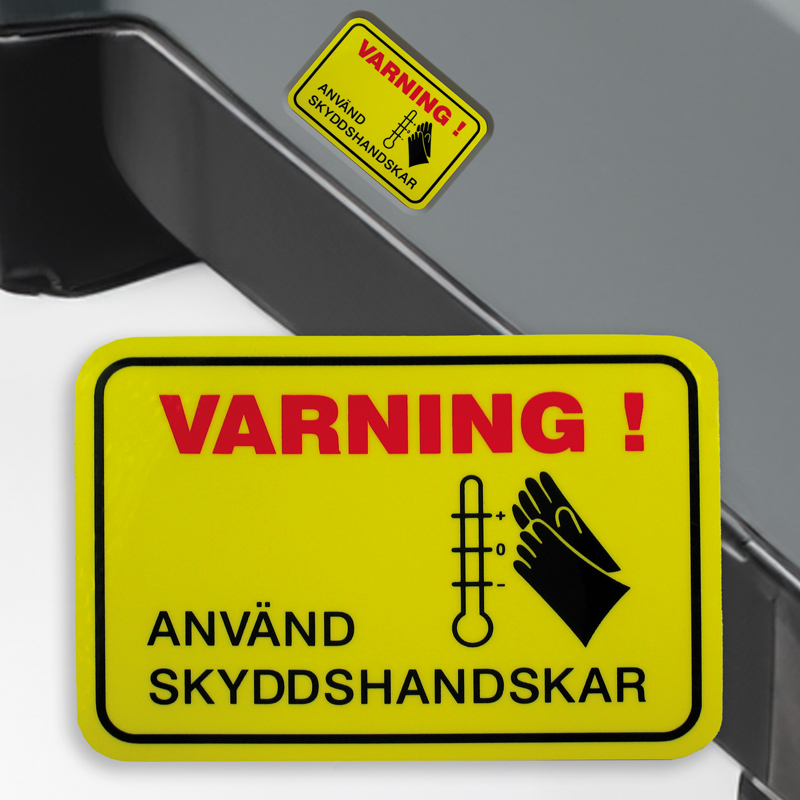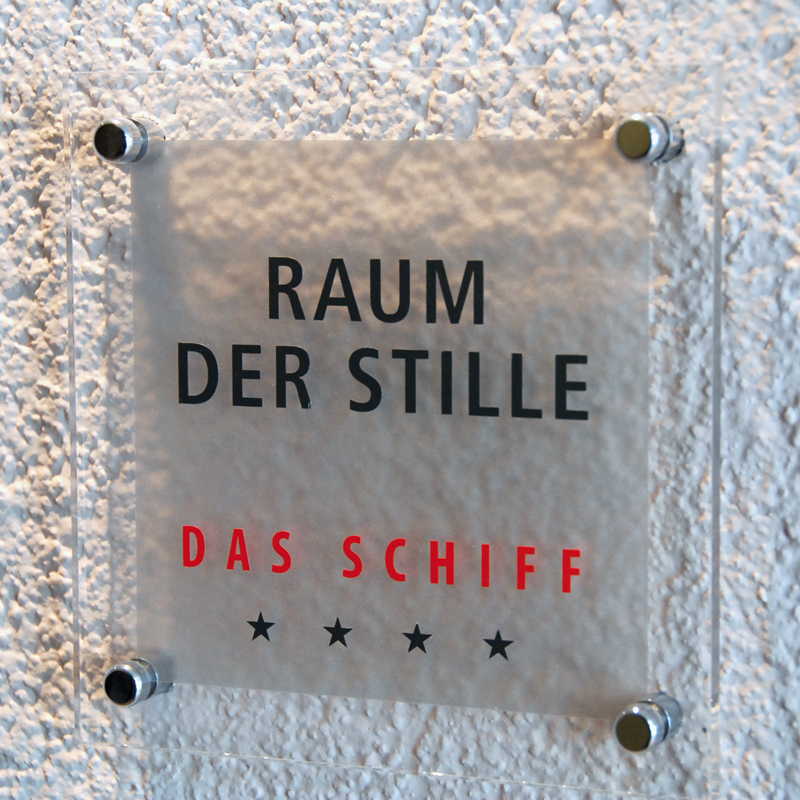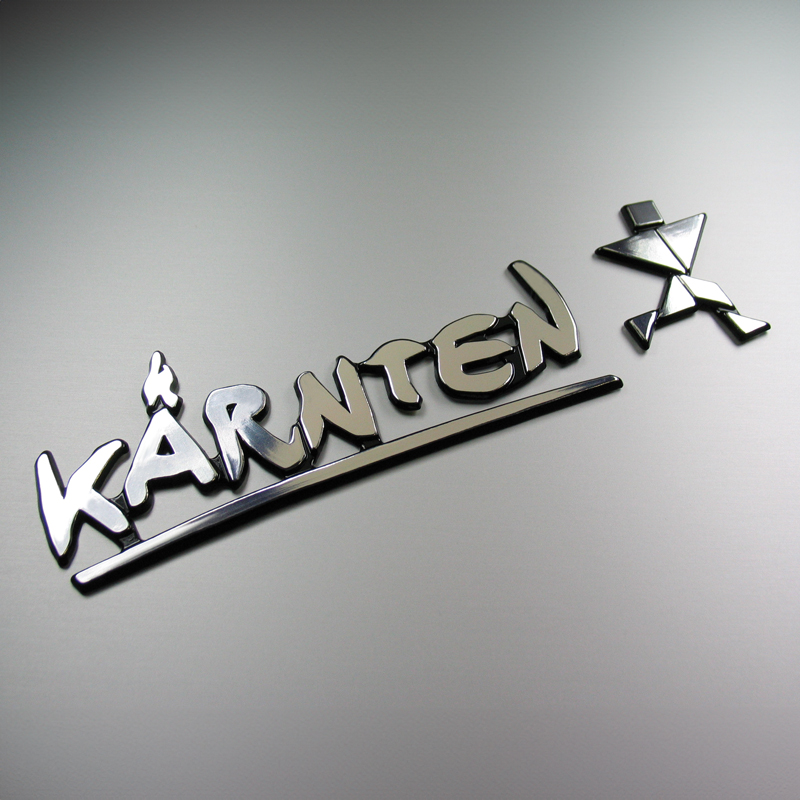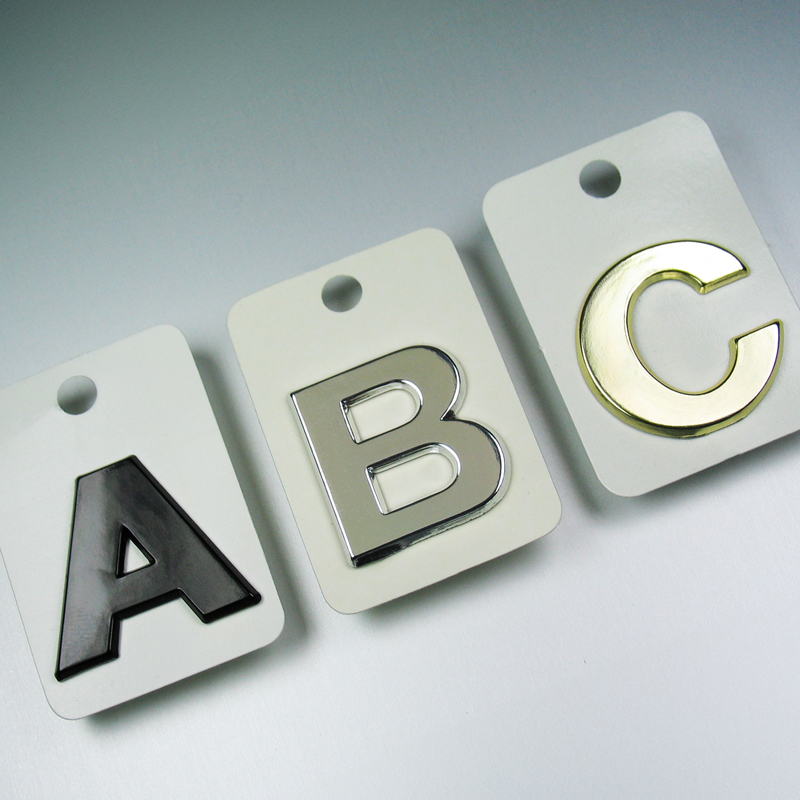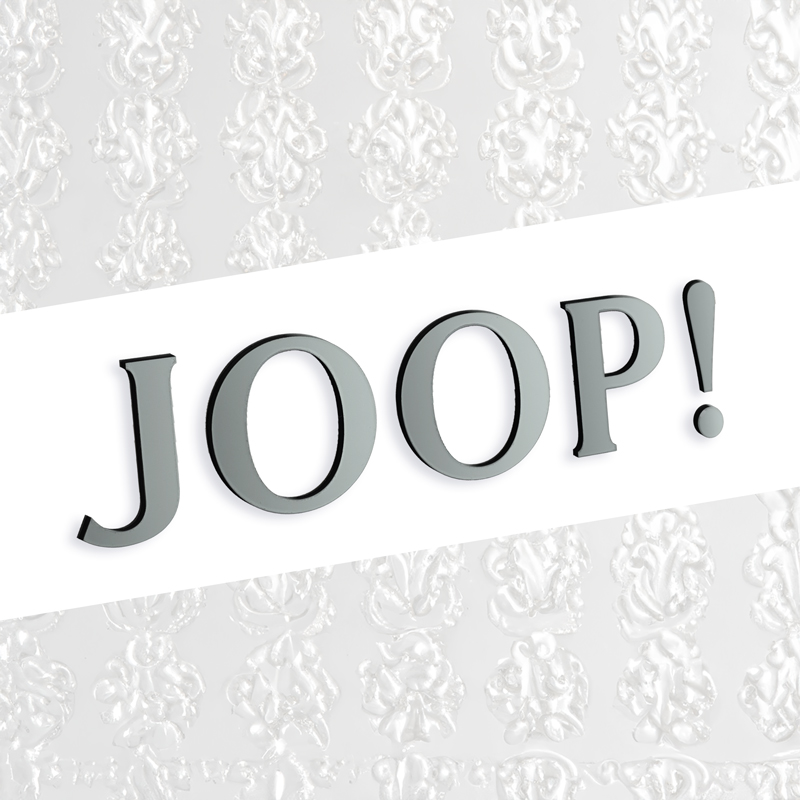This self-adhesive warning sign is optimised for durability and longevity. A matt transparent polycarbonate film with a thickness of approx. 250 µm serves as a high-quality base. This film is screen printed (due to high quantities and better quality) in three colours – black, red and yellow – from the reverse side. An adhesive tailored to the intended use is then laminated onto the printed reverse side before the parts are cut out (CNC) or punched out. The prints containing the actual information are therefore well protected between the polycarbonate film and the adhesive. We refer to this design variant as vacuum labels
In the field of technical labelling for devices, machines and vehicles, printed films of all kinds are often used, which are printed either on the back (underprint) or on the front (overprint). The overprint variant is usually more cost-effective, as the overprint films already have a base colour (e.g. yellow, white or black) and a self-adhesive backing. With the underprint variant, the base colour must be printed separately. The lamination of the adhesive, which is also necessary, is an additional step. While the printing is protected against mechanical and chemical influences due to the printing on the back in the case of underprinting, the printing is completely unprotected in the case of overprinting. However, it is possible to laminate an additional transparent protective film with a matt or glossy surface to protect the print to some extent. However, this represents additional production costs. The underprint variant is the more durable alternative. With overprint films, we also have no influence on the choice of adhesive, so adhesion is generally better in the underprint area. As an alternative to higher-quality screen printing, we can also offer digital printing, although this may result in some compromises in terms of colour fidelity. The different materials and manufacturing technologies can lead to quite significant price differences. It is therefore important for us to know our customers’ preferences when it comes to foil signs.

